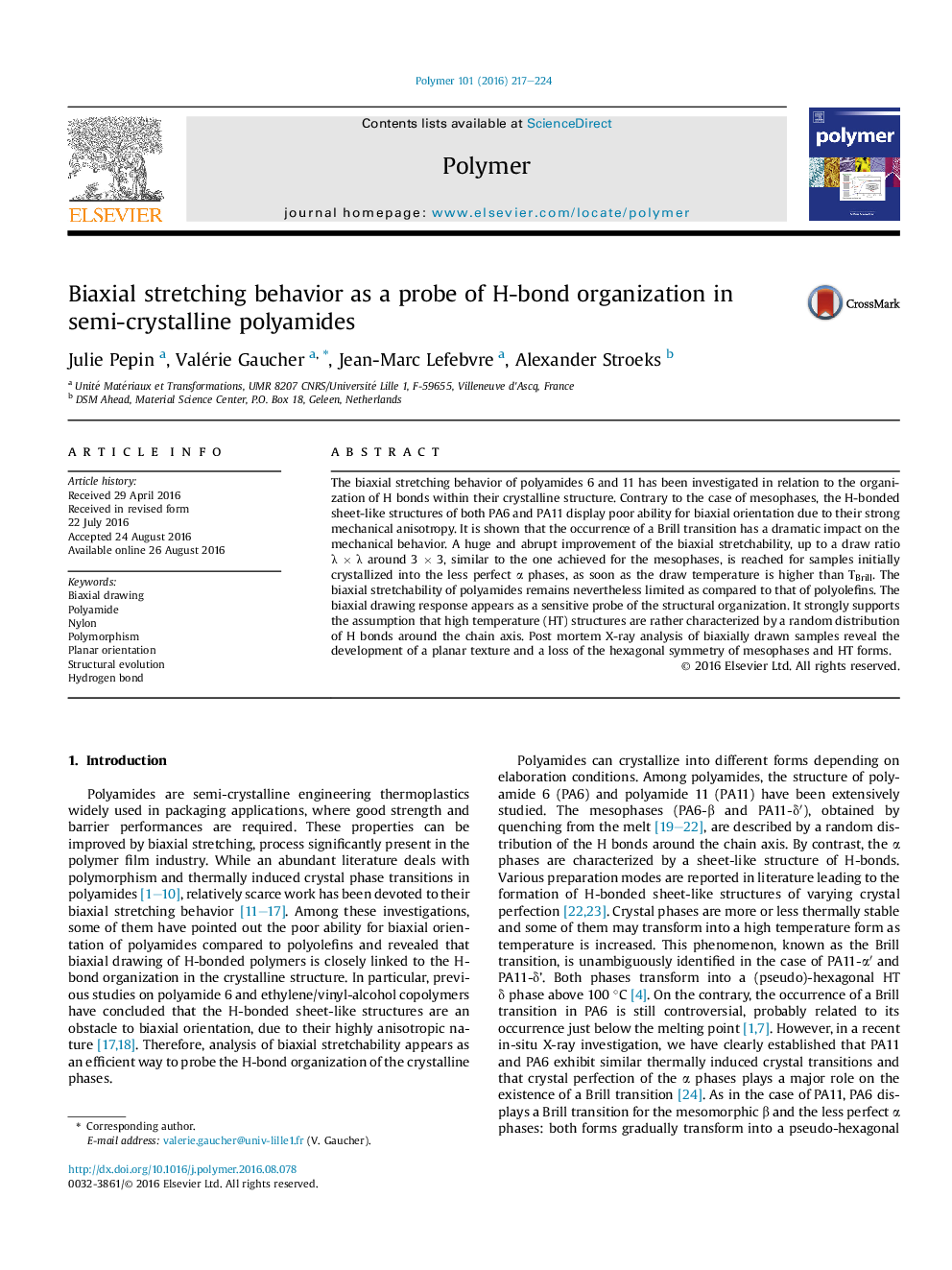| Article ID | Journal | Published Year | Pages | File Type |
|---|---|---|---|---|
| 5178906 | Polymer | 2016 | 8 Pages |
â¢The H-bonded sheet-like structures preclude any efficient biaxial orientation.â¢The biaxial stretchability of high temperature and mesomorphic phases is around λ Ã λ = 3 Ã 3.â¢High temperature phases are rather characterized by random distribution of H-bonds.
The biaxial stretching behavior of polyamides 6 and 11 has been investigated in relation to the organization of H bonds within their crystalline structure. Contrary to the case of mesophases, the H-bonded sheet-like structures of both PA6 and PA11 display poor ability for biaxial orientation due to their strong mechanical anisotropy. It is shown that the occurrence of a Brill transition has a dramatic impact on the mechanical behavior. A huge and abrupt improvement of the biaxial stretchability, up to a draw ratio λ Ã λ around 3 Ã 3, similar to the one achieved for the mesophases, is reached for samples initially crystallized into the less perfect α phases, as soon as the draw temperature is higher than TBrill. The biaxial stretchability of polyamides remains nevertheless limited as compared to that of polyolefins. The biaxial drawing response appears as a sensitive probe of the structural organization. It strongly supports the assumption that high temperature (HT) structures are rather characterized by a random distribution of H bonds around the chain axis. Post mortem X-ray analysis of biaxially drawn samples reveal the development of a planar texture and a loss of the hexagonal symmetry of mesophases and HT forms.
Graphical abstractDownload high-res image (201KB)Download full-size image
